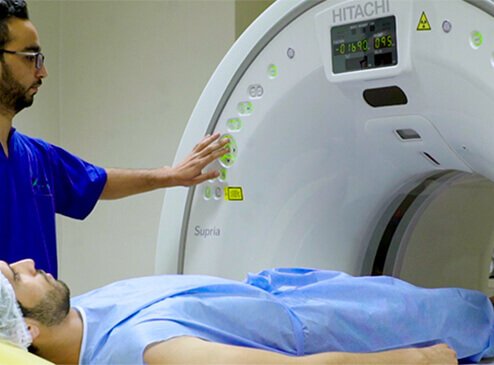Orthopedic surgery
- Home
- Orthopedic surgery
Orthopedic surgery
Our clinic has a modern technical platform and a multidisciplinary team specialized in orthopedic and trauma surgery. This unit takes care of all pathologies affecting the musculoskeletal system (bones, joints, muscles, tendons and nerves). It ensures the surgical treatment of disorders and injuries of the upper and lower limbs and the vertebral column.

Seeking advice ?
Submit your request and we will email you the information you need !
In order for our clinic to be at the cutting edge of modern surgical techniques offering the best results possible and to ensure optimal patient safety, our team makes sure that decisions are made jointly, with the involvement of orthopedic surgeons, rheumatologists, radiologists, anesthetists and physicians who treat patients on a case-by-case basis, to make the ideal therapeutic indication choice and select the most appropriate surgical technique.
We provide our patients with the most innovative and growing techniques, including:
Looking for recommendations on Orthopaedic surgery ? Submit your enquiries and a specialist will answer all your questions !
Hip, knee and shoulder prothesis
An integral and essential part of modern orthopedic surgery is the partial or total substitution (also called replacement) of a joint with a stent. This surgery stands out as the radical and ideal therapeutic alternative to fix functional disability caused by osteoarthritis or traumatic sequelae, by ensuring an optimal functional comfort and restoration of the limb biomechanics as close as possible to the natural state of the damaged joint.
Spinal surgery
Spinal surgeries are related either to the cervical or to the dorsal region, or more frequently to the lumbar spine. The most common lumbar spine surgeries are those of nerve decompression. Their main purpose is not to alleviate lower back pain, but rather to reduce lower limb symptoms (weakness or pain). In case of spine instability, i.e., if a vertebra slips out of place, the decompression surgery must be supplemented by a spinal stabilization surgery called arthrodesis. Most lumbar surgeries are performed via a posterior approach. Nevertheless, for well-selected cases, we may have to access the column via a minimally invasive anterior approach.
Arthroscopic surgery
Arthroscopy, a minimally invasive orthopedic surgery technique, is the set of procedures that allow access to the joint, through two or three mini incisions, to visualize problems inside joints, cartilages, ligaments and tendon insertions, using a fiber optic light source attached to a camera located in front of the orthopedic surgeon. Besides diagnosis, this technique enables surgeons to perform biopsies, suctions and/ or surgical procedures using mini instruments, instead of a single large incision along the joint. Arthroscopic surgery is becoming increasingly widespread in Tunisia, for it is getting increasingly mastered in terms of interventional accuracy and it ensures minor post-operative effects and a lower complication rate.
Minimally invasive foot surgery
This type of surgery constitutes a whole concept that resulted from the ongoing evolution of classical techniques for foot deformity correction. This procedure, which aims for pinpoint accuracy, is performed via an extra-articular approach and guarantees foot anatomy reconstruction through three-dimensional corrections. All this means that the minimally invasive approach has been adopted by foot surgeons as a privileged technique for the treatment of deformed feet, particularly hallux valgus, rigidus or flexus.
We are here to answer all your questions, feel free to contact us !




